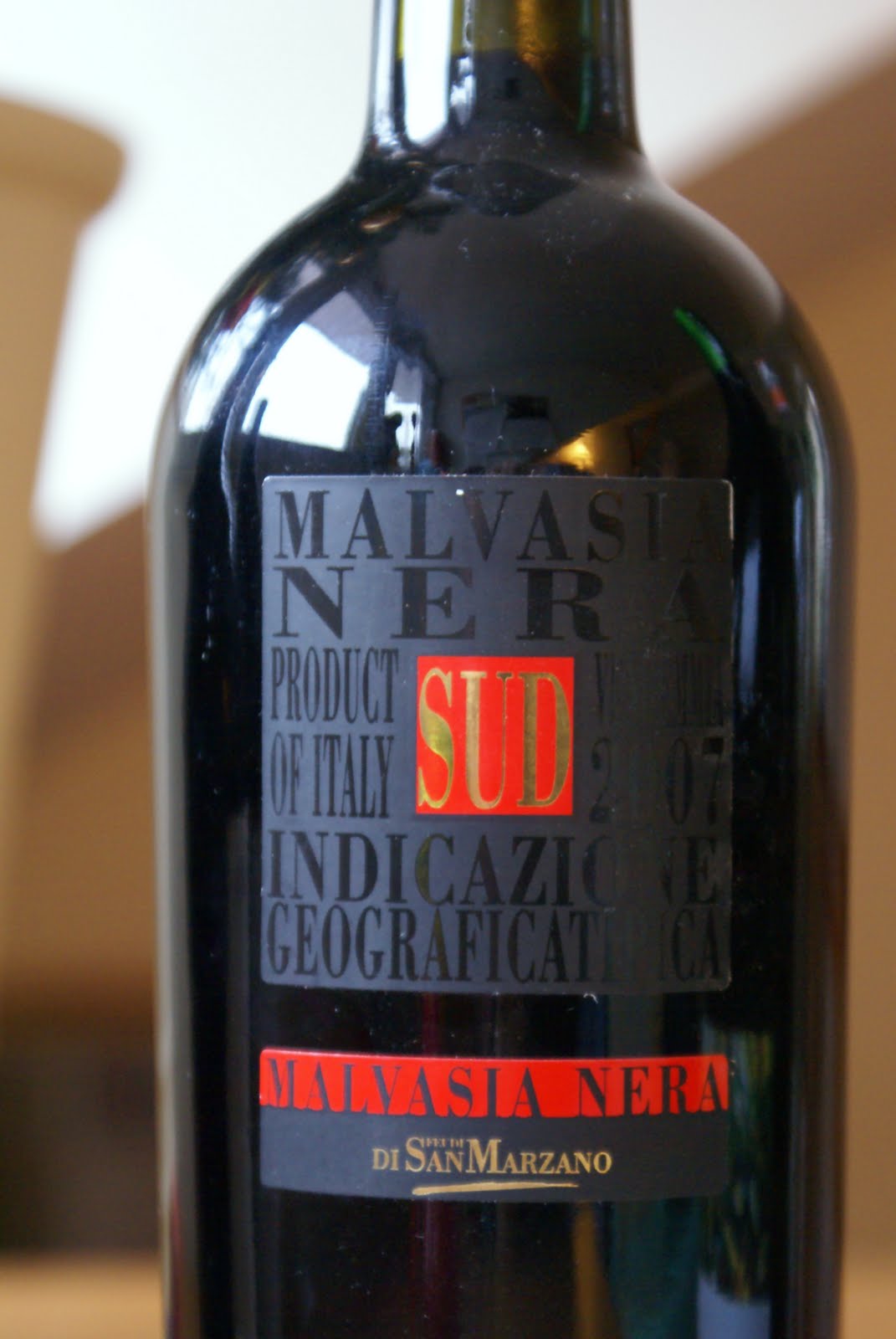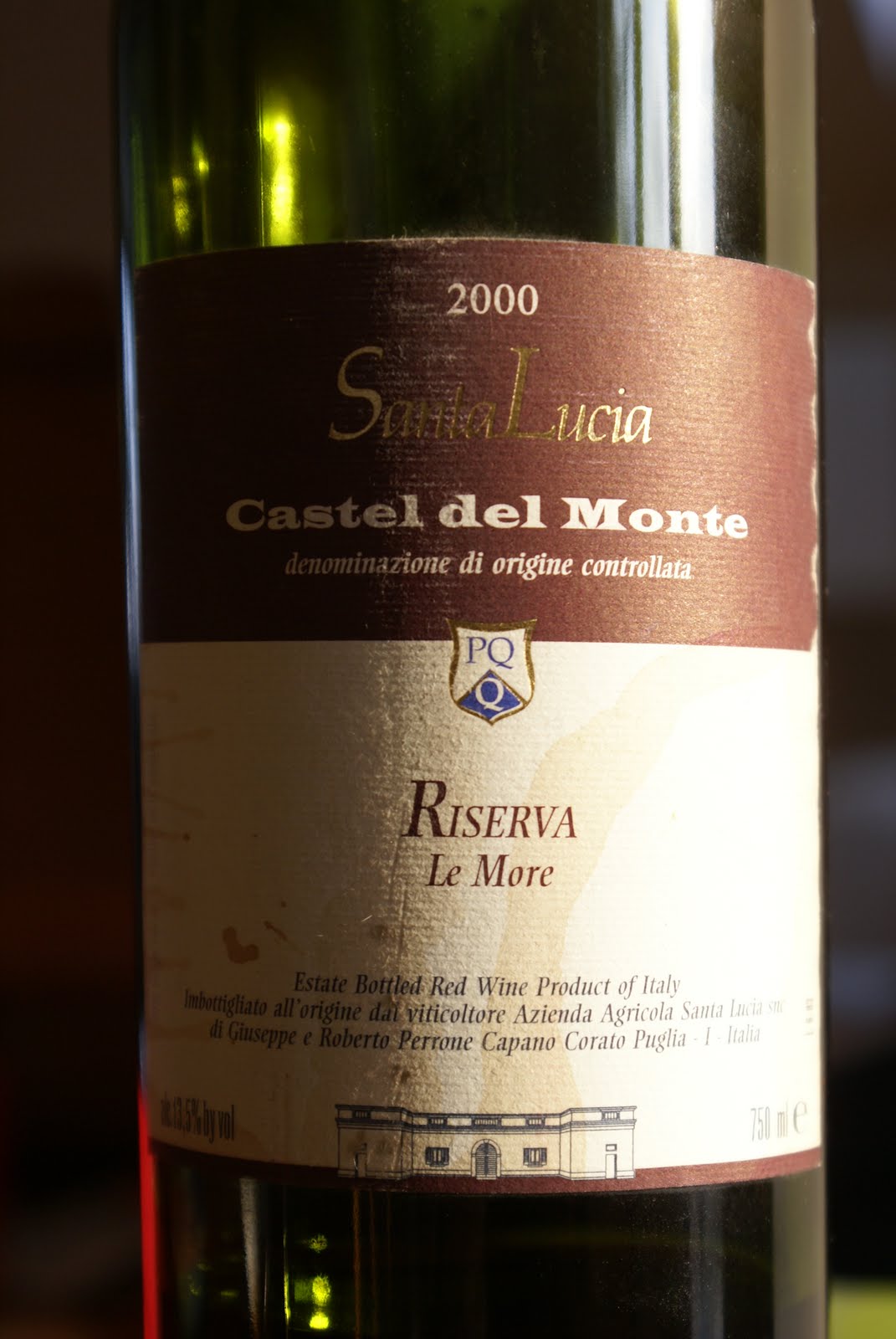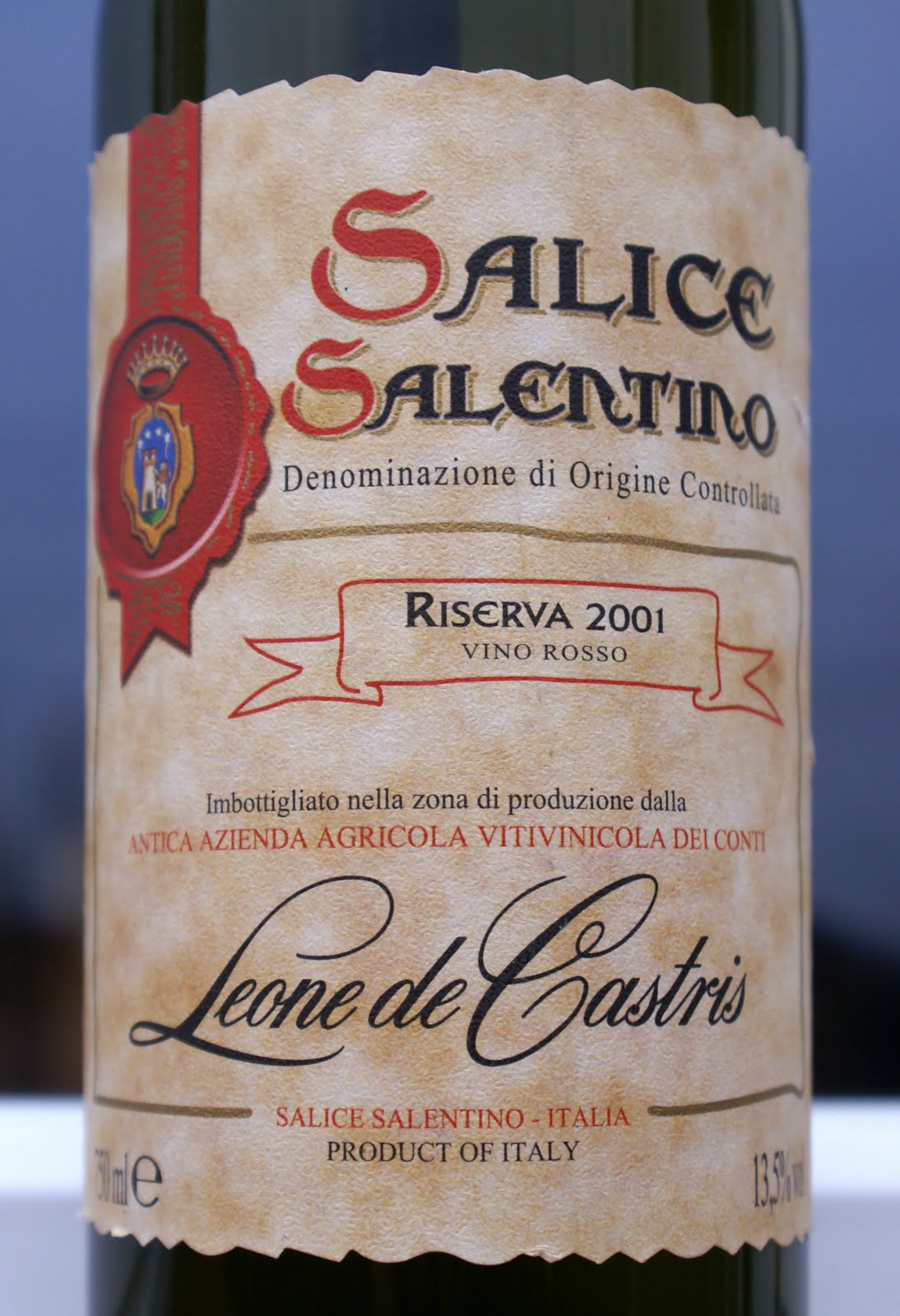In Apulia (4): Three wines that work well
Posted on 6 February 2010
In my recent series on Apulia I have been fairly critical of some aspects of the region’s winemaking. Back at home I sat to a relaxed tasting session with some potentially controversial wines, to see whether my feelings have softened.
Feudi di San Marzano is a large commercial winery making wines in a very fruity style (they’re high on the list of favourites of Luca Maroni, Italy’s most controversial critic), including the Primitivo Sessantanni that embraces the grape’s excesses I mentioned here. ‘Sud’ is San Marzano’s range of everyday varietal wines, and includes (interestingly) a white Verdeca alongside a Shiraz, Primitivo and Malvasia Nera. This latter grape is ubiquitous in Salento, the southern part of Apulia, but has always been used exclusively as a blending variety for its deep colour and lush fruitiness. (I’ve heard a theory that it belongs to the Grenache family). It allegedly lacks structure to be bottled on this own. Well, this Sud Malvasia Nera 2007 works very well indeed. It is a simple wine with not much bouquet to speak of, but making a statement about Apulia as a serious source of irresistibly tasty ripe fruit. The New World inspiration is very obvious here but the whole has a natural freshness and joyfulness that is rarely seen in an overseas wine. Unsophisticated but delicious, in a word. (It’s about 8€ retail).
With the Santa Lucia’s 2000 Le More, I wanted to double check my mixed impressions from a Nero di Troia tasting organised for us at Canosa by the Radici association. This grape is another former blending variety that has quickly risen to fame in recent years. But it’s still much a work-in-progress as producers are trying to figure out what winemaking styles suit it best. Rosés, light unoaked reds, classic long-aged large-oak examples, as well as turbocharged new oak modern fruit bombs are produced. The latter solution is the least interesting, the general feeling about Nero di Troia being that it tends towards overextraction, and doesn’t digest new oak well at all. The 2006 Riserva Le More from Santa Lucia was a case in point, and I much preferred their lighter Vigna del Melograno bottling. Well, I was proven wrong with the 2000 vintage of this wine. Time has been gracious to it, and it’s showing brilliantly. It has two major merits today: it has totally digested its oak, and shows Nero di Troia’s exuberant floral profile well. Colour is still dark, bouquet only mildly evolved, softly olivey, rather simple as befits this rustic grape variety, but with good overtones of violets and other flowers. On the palate this still is quite dynamic and bit of tannic-punchy, with Nero di Troia’s typically moderate acidity. Modern and dark-fruity but with really good structural balance, and more seriousness than most Troias.
Leone De Castris is one of Apulia’s veteran wineries, but with a recent change of style with the hiring of consultant Riccardo Cotarella I have been very underwhelmed by their wines. Especially by the Salice Salentino Riserva 2006, and all-time classic of traditional Apulian balsamic evolution, and following the Cotarella ‘revolution’ more of a blueberry muffin milkshake Mendoza Malbec-wannabe. (It is declared to be 100% Negroamaro grape aged in large oak; judging by what’s in the glass I have every reason to question both claims). So as a consolation I opened my last remaining bottle of the pre-Cotarellean Salice Salentino Riserva 2001. What a delightful wine! An unashamedly evolved, transparent ruby colour and an engaging bouquet of ripe cherry and red berries, with a hint of Salento stewed fruit preserve character, with minor herbiness for complexity; no oak, no tar. The real interest is on the palate with excellent volume of ripe and fleshy but vibrant fruit. And there’s quite some tannins on the finish. Still too young, should wait another 2–3 years at least. Where the latest vintage is flabby and boring this is poised and refreshing, structured and drinkable, sturdy and elegant at the same time. If you have bottles left, cherish them. This wine is no more.
Source of wines: Feudi di San Marzano – own purchase, Santa Lucia, Leone De Castris – samples provided by the producers (back in 2004).




